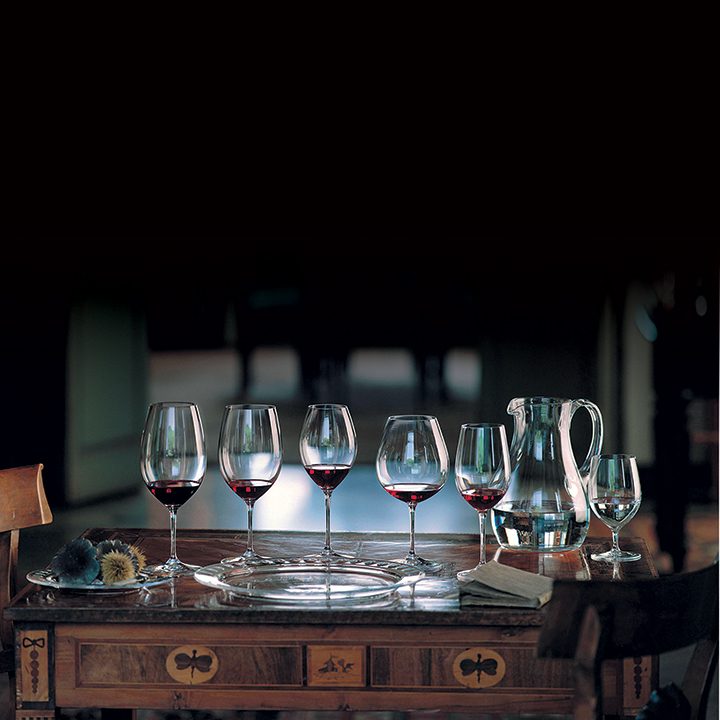How important is the right glass in wine appreciation?
A memorable moment for me was with Austrian glass manufacturer Riedel, when the same red wine was served in four different glasses. Tasters were asked to sip from each of their glasses in turn, noting any differences and ultimately deciding on a preferred glass.
We were given no extra information about the wine but I clearly favoured it in one particular glass: its aromas were more distinct and its flavours more intense.
It turned out that we had been poured a Bordeaux-style, Cabernet Sauvignon-based blend and the glass in which it showed best was indeed the one designed by Riedel, specifically for this style of wine.
Do I need different glasses for different wines?
The Riedel family has been in the glass business for over 300 years but it was Professor Claus J. Riedel (1925 – 2004) who was the first designer to recognise that the bouquet, taste, balance and finish of wine are affected by the form of the glass from which it is drunk.
In essence, the theory is that the shape and size of the bowl of the glass will affect where the wine lands on your tongue and also the speed at which it travels to get there. Therefore, these minute variations in the glass design mean that there are now glasses available to suit an astounding number of grape varieties and wine styles.
Does the glass maketh the wine?
However, taking full advantage of the whole range is not practical, in terms of expense and storage, and most people are happy with two or three different types of glassware.
Even so, there are basic considerations to bear in mind when choosing your glasses for optimum enjoyment of your wine.
How to choose the right wine glasses
Transparency – plain, uncoloured, non-engraved, uncut glass allows you to scrutinise the wine’s appearance. Colour variations can be most revealing: intensity and brightness suggest potential concentration and age.
Flavour neutrality – wine can be consumed from a drinking vessel made from any material (prior to glass, silver was most commonly used). As glass is inert, it does not impart any foreign flavours to the beverage.
The importance of a stem – the ideal wine-glass stem allows you to hold the glass without affecting the wine’s temperature. The stem also enables the glass to be rotated easily, which helps to release the aroma.
The rim – this should be as thin as possible to allow the palate to be as close as it can be to the liquid.
The shape of the bowl – the most important element of tasting is smelling the wine and it is therefore crucial to use a glass that enables you to do so effectively. Aromas are by their very nature volatile – you want to be able to release them through swirling and then have them remain in the glass for as long as possible before they inevitably escape.
Therefore, the best kind of glass is tulip shaped with a broad base and narrowing towards the rim.
Being pedantic about what you drink your wine out of might seem geeky, but if you are sceptical (and particularly if you are investing in good wine), try the Riedel experiment and compare the same wine with different-shaped glasses.
You won’t settle for a tumbler of dry white ever again.
For information about Riedel glassware visit www.reciprocal.co.za or www.riedel.co.za.
By Christian Eedes

